Koblenz-Metternich, Schönstattzentrum, Hauskapelle
| Grundriss | |
 | |
| Außenansicht | |
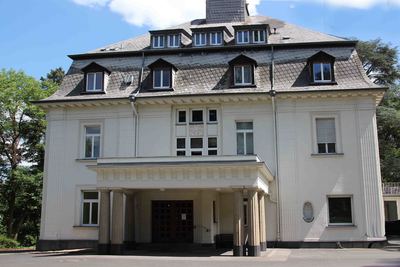 | |
| Innenansicht | |
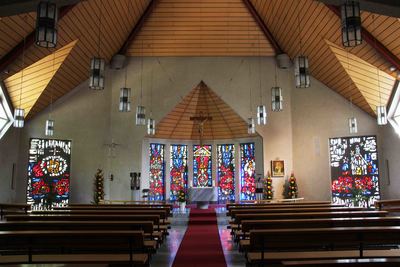 | |
| 1 | |

|
Ornamentale Komposition. Walter Bettendorf, 1967 Fenster im Schiff, Antikglas/Blei/Schwarzlot/Betonglas |
| 4 | |

|
Symbol zwei Schlüssel: Amt und Charisma als gegenseitige Ergänzung im Dienst der Kirche. Walter Bettendorf, 1967 Fenster im Altarraum, Betonglas |
| 5 | |

|
Orientierung für Christen (vgl. Mt 6,10). ITA PATER - Ja, Vater. Lebensmaxime von Schw. M. Emilie Engel, Schönstätter Marienschwester. Die Hände symbolisieren das Volk Gottes. Walter Bettendorf, 1967 Fenster im Altarraum, Betonglas |
| 6 | |
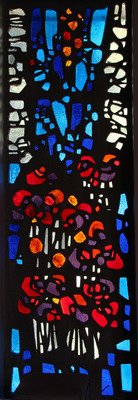
|
Ornamentale Komposition. Walter Bettendorf, 1967 Fenster im Altarraum, Betonglas |
| 7 | |
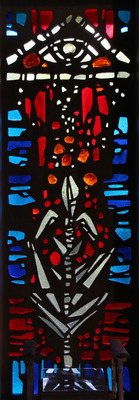
|
Symbole Auge Gottes und Lilie (Symbol für Maria) - Gott hat Maria im Blick, sie ist das unverdorbene Konzept Gottes vom Menschen. Walter Bettendorf, 1967 Fenster im Altarraum, Betonglas |
| 8 | |
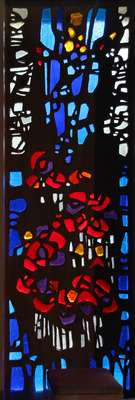
|
Ornamentale Komposition. Walter Bettendorf, 1967 Fenster im Altarraum, Betonglas |
| 9 | |
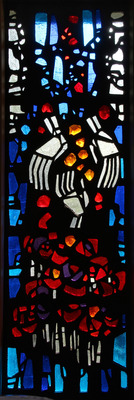
|
Symbol Gottes Vaterhände und offene Kinderhand - Gott wendet sich dem Menschen zu, die Geschenke seiner barmherzigen Liebe legt er in leere Hände. Walter Bettendorf, 1967 Fenster im Altarraum, Betonglas |
| 10 | |

|
Symbol Schönstatt-Kapelle - Ort der Gegenwart Gottes und Wirksamkeit Mariens. Walter Bettendorf, 1967 Fenster im Altarraum,, Betonglas |
| 13 | |

|
Ornamentale Komposition. Walter Bettendorf, 1967 Fenster im Schiff, Antikglas/Blei/Schwarzlot/Betonglas |